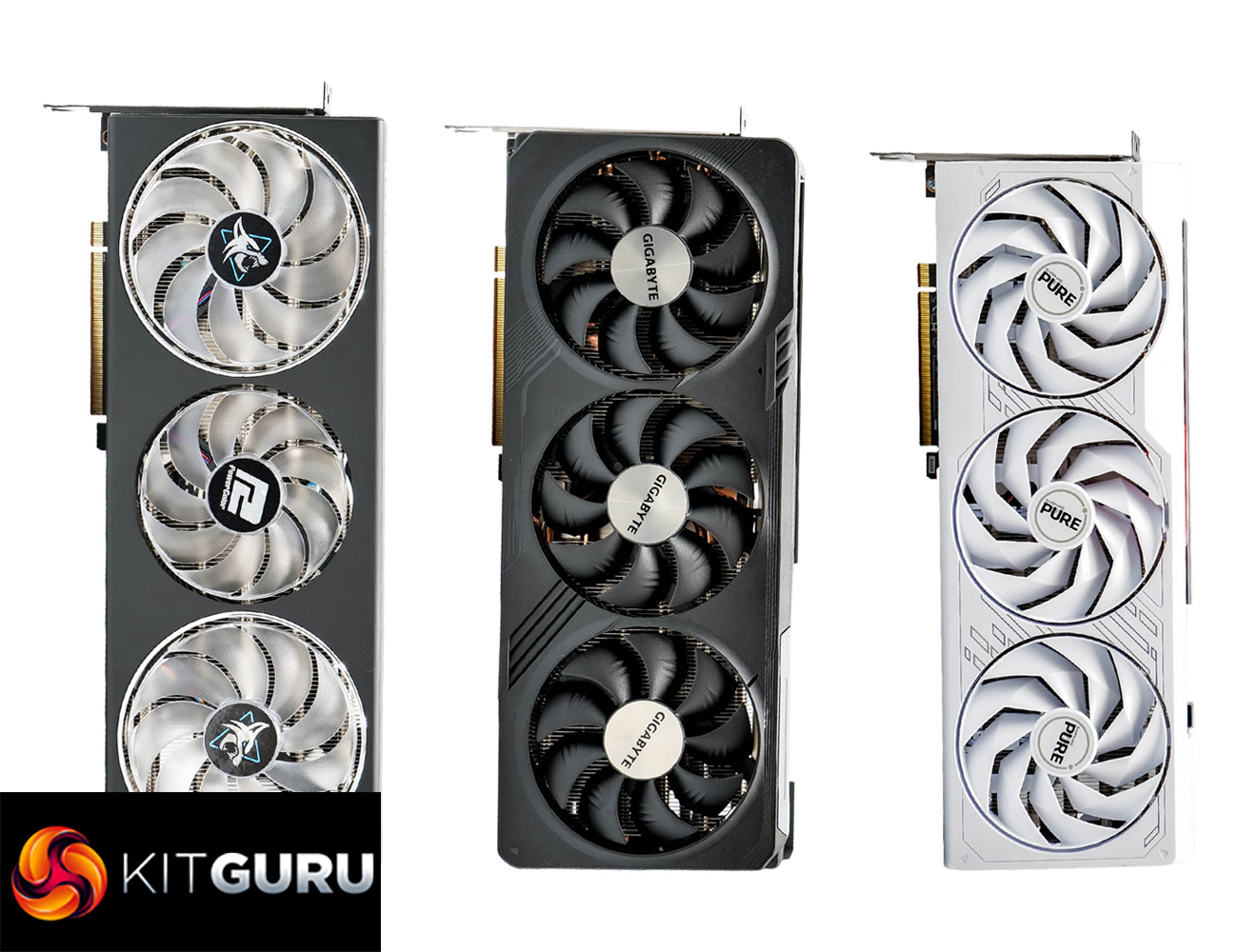It's been interesting coming back to the RX 7700 XT after about a year – I put this GPU down as a missed opportunity in my day 1 review and hadn't thought much of it since. Prices have tumbled in the ensuing year however, and now the RX 7700 XT can be found for as little as £340, so is it worth buying?
We'll start with the good news – the 7700 XT is still well clear of its main rival from Nvidia, the RTX 4060 Ti 16GB. That GPU retails for around £410-430 depending on the model, so it's actually more expensive than the 7700 XT, yet we saw the AMD GPU coming in around 30% faster in Cyberpunk, so it is a pretty one side battle we have to say. Yes, the Nvidia rival does fare much better when ray tracing is enabling, and it's also more efficient, but the value on offer from the 7700 XT is just far superior to the 4060 Ti 16GB.
The situation with the 7700 XT versus the 7800 XT, however, is more complicated. Yes, the 7700 XT has dropped considerably in price, but so has the 7800 XT, with models now starting at around £440. While we have seen the Pulse 7700 XT as low as £340 over the last week or two, the models we have checked out today are considerably more – the Gaming OC retails for around £375, the Pure is £390 and the Hellhound is closer to £400.
So while the pricing landscape has shifted quite substantially relative to MSRPs – thanks in part to Nvidia's 4070 Super refresh which put downward pressure on the competition – in relative terms, the 7700 XT is still fairly close to its bigger brother, the 7800 XT. If we only compare both Sapphire Pure models for instance, the 7800 XT is about 17% more expensive than the 7700 XT, despite being 20% faster on average at 1440p, with 4GB more VRAM.
Still, the fact prices have dropped considerably is good news, and I do think the 7700 XT remains worth considering if you cannot spend more than £400 on a new GPU. The Pulse model, if available at £340, does look like particularly good value, but the fact remains most 7700 XT models are still priced too close to their 7800 XT counterparts for comfort.
A final word on the three models tested today though, as they are all very impressive in their own right. The Pure will obviously appeal if you want a white card while still offering solid thermals and low noise, while the Gaming OC is as dependable as ever, with a choice of BIOS modes too. I do think the HellHound is the pick of the bunch due to its very impressive noise-normalised thermals and dual-BIOS modes, though it is also the most expensive of the lot, so bear that in mind.
Discuss on our Facebook page HERE.
Gigabyte RX 7700 XT Gaming OC
Pros
- Stealthy matte-black design.
- Dual-BIOS.
- Solid thermal performance.
- Low noise levels.
- Small RGB lighting zone.
Cons
- Still offers worse value than the RX 7800 XT, while also shipping with 4GB less VRAM.
- Only small improvements to efficiency versus RDNA 2.
- Hellhound offers better noise-normalised thermals.
PowerColor RX 7700 XT Hellhound
Pros
- Stealthy dark grey design.
- Dual-BIOS.
- Best-in-class thermal performance.
- Very low noise levels.
- Physical toggle for LED lighting options.
Cons
- Still offers worse value than the RX 7800 XT, while also shipping with 4GB less VRAM.
- Only small improvements to efficiency versus RDNA 2.
- Most expensive model tested today.
Sapphire RX 7700 XT Pure
Pros
- White design will have strong appeal to some.
- Solid thermal performance.
- Low noise levels.
- Physical toggle for red LED option.
Cons
- Still offers worse value than the RX 7800 XT, while also shipping with 4GB less VRAM.
- Only small improvements to efficiency versus RDNA 2.
- Hellhound offers better noise-normalised thermals.
- No dual-BIOS.
KitGuru says: We have tested three competent RX 7700 XT models today, but with the 7800 XT also getting cheaper, that GPU still offers superior value.
 KitGuru KitGuru.net – Tech News | Hardware News | Hardware Reviews | IOS | Mobile | Gaming | Graphics Cards
KitGuru KitGuru.net – Tech News | Hardware News | Hardware Reviews | IOS | Mobile | Gaming | Graphics Cards




